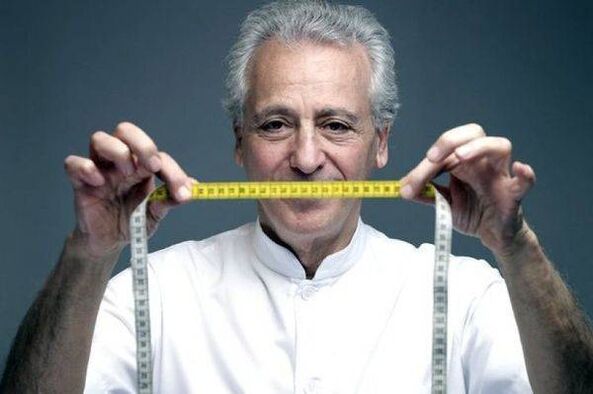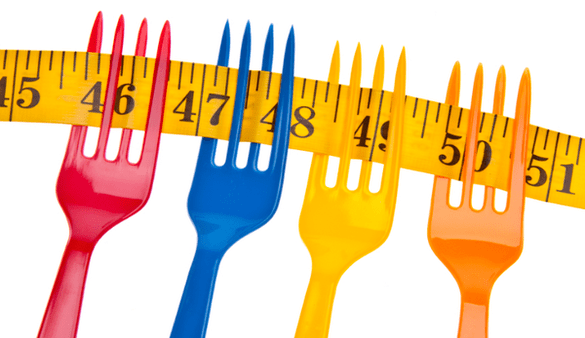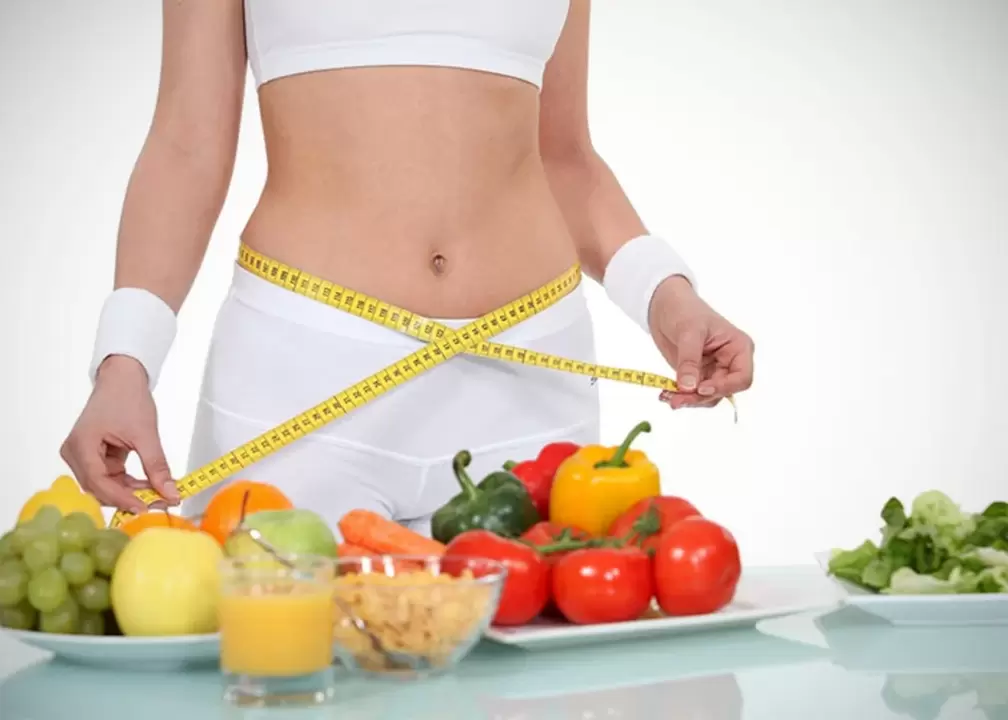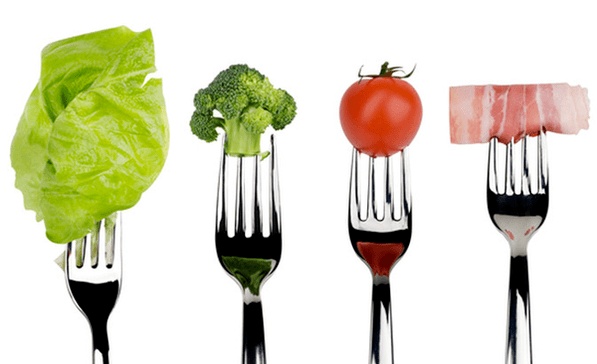It’s easy to get confused about the modern variety of diets, but protein diets stand out on the list. The Dukan diet is a prominent representative of protein-food systems that include eating enough food but in varying proportions of proteins, fats and carbohydrates.
Diet Basics
The Dukan diet is known in many countries. The effectiveness of this approach has been demonstrated in a number of studies and applications. However, nutrition expert Pierre Ducan himself claims that he did not develop a diet but a balanced diet so that the body does not feel hungry and stressed.

Weight loss is due to the body burning reserves of fat and carbohydrates under the skin, while the stomach is not empty but digests protein-rich foods.
A good competitor here will be the Lesenka diet, the essence of which is the daily delivery of different levels of nutrition. Different products, different approach for 5 days do not get bored.
Those who want to reduce their forms with the help of the Dukan diet should be familiar with the principles:
- Lead an active lifestyle, exercise a lot, run or walk. Perform daily walks in the fresh air for 30-40 minutes. Losing weight with diets is unreasonable, the body needs to do physical activity because the adipose tissue in the muscles burns.
- Drink plenty of water (not juice, compote or drink, but still water). During the protein diet, the body empties the accumulated fluid, the daily replacement of which is the number one task of weight loss.
- Strictly follow the diet and diet phases. If you personally change your diet or don’t follow the system, you can’t hope for effective results.
- Eliminate foods that contain light carbohydrates from your diet. The use of complex and indigestible carbohydrates in the form of cereals and bran is permitted.
- Oat bran should be an essential part of your daily diet. They prevent the development of constipation during the diet and provide the body with adequate amounts of carbohydrates.

The main phases of the diet
The Dukan diet is based not only on adhering to a certain diet, but on dividing the entire course of the diet into phases that fit the diet and product list. There are four phases in total:
- Attack.
- alternation
- Anchoring
- Stabilization
It is worth considering each phase separately.
Attack phase
This is the first stage of the diet, involving eating only protein foods. The average duration of the phase is 7 days, but the interval can be 3-9 days. The duration of the first stage is chosen individually and depends on the degree of excess weight and the health condition of the losing weight.
Excess weight of 30 kg or more refers to up to 9-10 days, overweight of 20 kg for 7 days, and mild excess weight of up to 20 kg for 3-5 days. During this period, maximum weight loss occurs, which results in a restriction on the intake of carbohydrates and fats.
Recommendations: The offensive stage accepts the consumption of protein products of animal origin: meat, fish, seafood and dairy products. You can use it in unlimited but reasonable quantities and in any form (fried, cooked, steamed).
As for the accompanying additives, their list includes: oat bran (must be used daily), mustard, salt, onion, spices, tomato puree, crab sticks (up to 8 per day), lemon, olive oil. Diet drinks, non-fat kefir, tea and coffee are allowed.
The meat must not be fatty, excluding pork, lamb, rabbit, duck or goose. If there is a bird in the diet, it should be consumed without skin. The restriction applies to vegetables and fruits.
During this period, the body experiences stress, and internal metabolic processes are restructured. For some, this period can become critical: dizziness, weakness, loss of consciousness, and other symptoms indicate that it is worth moving on to the next phase.
Alternating or "cruising" phase
The essence of this stage is the introduction of additional foods (vegetables, fruits) into the diet, but not continuously, but selectively, at specified intervals. The intervals should be equal to each other: after one day, two or more days, everything depends on the amount of excess weight before the diet. If its value did not exceed 10 kg, the interval can be minimal (1x1, 2x2), and if its value is greater than 10 kg, the maximum interval is 5x5.
The duration of the second stage is determined individually as well as the first. The interval is 1-2 months, the duration depends directly on the weight lost during the first phase. The bigger, the longer the second phase should last.
In the second stage, the diet should be more varied, so you can add the following foods:
- all products from the first phase;
- starch-free vegetables (cucumbers, tomatoes, zucchini, bell peppers, asparagus, cabbage, mushrooms);
- unsweetened fruits;
- skimmed milk and cheese;
- bread.
You can only add fruits and vegetables on days whose menu corresponds to the second phase. That is, 5 days of protein menu from the first phase, the next five days of protein-vegetable menu from the second phase. In addition, you should not mix the products of the second phase, you can only select and use two ingredients per day.
Prohibited vegetables and fruits include: potatoes, corn, legumes, bananas, cherries, avocados, grapes.
If the deterioration of the state of health has occurred in the first stage, then in the second stage the state must stabilize, the state of health must improve, and the metabolic processes must be restored.
"repair" phase
The third phase helps to consolidate the result, its duration also depends on the number of kilograms "lost". Each kilogram lost is associated with ten days from the third phase. The diet during this period is even more similar to normal and should not cause discomfort.
In addition to the products from the first and second phases, the diet also includes:
- starchy vegetables (potatoes, legumes, corn);
- pasta;
- cereals (rice, buckwheat, oatmeal).
At this stage, you can interrupt your diet twice a week, but at the expense of one meal. For example, you can eat your favorite carb food for breakfast, but prefer to skip lunch or dinner.
An important rule at this stage is the daily consumption of all fruits except bananas, grapes and cherries. They contain a lot of sugar, which is quickly converted to subcutaneous fat.
"stabilization" phase
This phase is the final and is actually a postulate for later life after the diet. Its rules are simple, and following them will allow you to stay in shape without resorting to diets:
- drink plenty of water every day (at least 1, 5 liters);
- to lead an active lifestyle;
- prepare a protein menu once a week that meets the requirements of the first stage;
- daily consumption of oat bran.
Implementing the above recommendations will lead to the success of anyone who wants to overcome excess weight and, most importantly, to stay at or exceed the level achieved.
Approved products
You can summarize the list of foods allowed in the Dukan diet:
- meat (beef, veal, pigeon, chicken, quail);
- eggs (chicken, quail, preferably without yolk);
- low-fat milk and sour milk products (milk, kefir, cottage cheese, cheese, yoghurt, cheese);
- seafood in any form and quantity;
- crab sticks;
- river and sea fish;
- oat bran;
- vegetables which do not contain starch or which contain only small amounts of starch;
- unsweetened fruits;
- various beverages without sugar, tea coffee;
- spices, condiments, dressings.
In addition to the diet plan developed, nutritionist Dukan also published a cookbook with recipes. The foods in Dukan’s cookbook only include foods on the list of allowed diets, which greatly facilitates the whole process of losing weight and inventing new foods.

Among the simplest and most popular dishes, it is worth highlighting the following:
- "Crab Salad". To prepare you will need: half Chinese cabbage, 4 sticks of crab sticks, 4 tablespoons of canned corn. Finely chop the cabbage and crab sticks, mash the cabbage and salt. Mix all the ingredients in a bowl and pour the salad with lemon juice and homemade lean mayonnaise.
- - Cheese fish curd. For cooking you will need: 0, 2 kg of fish (salmon), 0, 4 kg of low-fat cottage cheese, 1 chicken egg, 4 tablespoons of oatmeal. Preparation: mix the cottage cheese with the eggs, add chopped, skinless fish cubes. Add spices and condiments to taste. The resulting mixture is formed into balls, rolled in oatmeal, placed in a pan or grill and baked over low heat. Do not use oil for frying, do everything in a dry pan.
- Yogurt dessert. During the diet you can treat yourself to a dessert, which you will need: 0, 2 kg of low-fat natural yogurt, chicken eggs - 2 pcs, 50 g of corn starch. Put all the ingredients in a bowl except the eggs. Divide into proteins and yellows: immediately send the yolks to the finished mixture and whisk the proteins to a creamy whisk and add to the mixture. The dessert can be sweetened with a sugar substitute and the addition of flavoring and salt. The resulting mixture was poured into a baking tray and placed in the oven for 20 minutes.
- - Beef with eggplant. For two servings you need: 0, 3 kg of beef cut into small cubes, 1 eggplant, 2 tomatoes, 0, 150 kg of mushrooms (champignons), 1 clove of garlic, parsley, salt, pepper. Preparation: Cut the eggplant into rings or cubes and pour water over it for 30 minutes (bitterness should come out of it). Pour the water over the eggplant and dry on a paper towel. Cut the tomatoes into slices and the mushrooms into slices with the eggplant. Add the garlic and parsley, add water and cook for 30 minutes. Take a saucepan into the oven, place some vegetables on the bottom, then salt, pepper the meat, and top with the other vegetables. Send to the oven for 15-20 minutes.

It is not at all necessary to use the recipes in Dukan’s book, we can also compile our own menu from approved products that meet the diet section.
How much can you lose per pound
Before talking about the estimated number of kilograms delivered, it is worth clarifying the factors that affect them:
- the presence and severity of physical activity: if you are not playing sports or at least walking, do not talk about a good result;
- lack of enough water in the diet: water contributes to weight loss, especially on a protein diet;
- the amount of overweight: nutrition experts say that the higher the overweight rate, the more kilograms a person can lose;
- the duration of the diet and its individual phases.
The average weight loss is 5-15 kg. Moreover, each phase has its own changes and weight loss. The first phase of the diet is the most important as it contributes to the maximum rate of weight loss. The next second stage is characterized by small losses, and the third and fourth fully consolidate the result.
Dukan diet reviews
First review
"I’ve heard of the Dukan diet many times, but I didn’t dare try it. Somehow scary, many talk about low back pain, weakness, and malaise. Maybe I’m looking for some alternative to this diet.
Second review
"My husband’s sister often visits France. There, this diet is just one brand, even in supermarkets there are separate shelves for products that meet the diet. He himself tried this method of weight loss. The result is 10 kg in 2 months. It won't stop.
I am currently on a different diet, but in a month I will also start the Dukan diet to get in shape for the season.
Third review
"Girls, don’t try this diet! I was careless and sat on it to the maximum. A week later I felt the ground go out from under my feet, it was dark in my eyes, creaking in my ears. Pain in the waist or kidneys, I don’t know where, but it’s very scary and dangerous.
I went into the hospital where the nurse said I was not the first to have such a diagnosis. Before trying this diet on your own, you should have a test and see a doctor. A protein diet is very dangerous for your kidneys and can cause tissue damage, so don’t experiment on your own. "
fourth revision
"I’ve experienced this diet more than once. Thank goodness I didn’t notice any side effects. Maybe because the first phase didn’t last that long (5 days), but in the second I no longer alternated between the protein and protein-vegetable menu days, I ate both protein and vegetables every day. I was satisfied with the result (-8 kg). You could resort to this diet more often, but it is very expensive, especially in the winter.
Fifth overview
"I recently watched a TV show and there the endocrinologist said it was impossible without carbs and glucose. Our brains feed on them, and if they stop getting into the body, the brain will first starve and then die. I don’t know if that’s true or not, they can say anything on TV. But I was wondering, what if the negative reviews on the internet aren’t without reason and could actually harm your health?

































